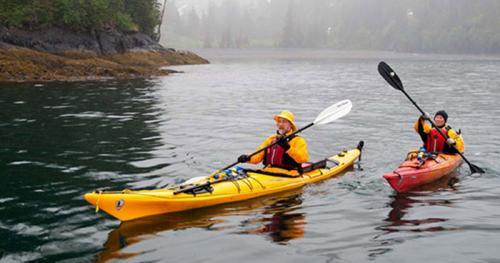Land and Water Conservation Fund

Recreation, kayaking
WC
The Land and Water Conservation Fund has been America's most important conservation funding tool for nearly 50 years.
What is the Land and Water Conservation Fund?
The Land and Water Conservation Fund (LWCF) takes a portion of royalties energy companies pay the government for extracting publicly owned offshore oil and gas from the Outer Continental Shelf. The government then takes those revenues and reinvests them in the conservation of our public lands and natural resources.
Energy companies pay the federal government about $900 million every year. This goes to the Land and Water Conservation Fund.
How does the federal government use the Land and Water Conservation Fund?
The federal government uses the Land and Water Conservation Fund to acquire and protect pockets of private lands within our national parks, forests, refuges, trails, Bureau of Land Management lands and in other places. The fund also protects and supports:
- Recreation and conservation lands
- Land access
- Working land easements
- Expansion and development of state and local parks
Why is the Land and Water Conservation Fund important?
Over its nearly 50 year history, the Land and Water Conservation Fund has protected more than 5 million acres of land and supported more than 41,000 state and local park projects. The LWCF has protected land in 98% of United States counties.
Local communities and economies
The Land and Water Conservation Fund is a benefit to the overall health and economic strength of local communities.
- LWCF is vital for public access to outdoor recreation
Hunting, fishing, camping and other outdoor recreation activities contribute a total of $730 billion annually to the economy. This supports 6.5 million jobs (1 of every 20 jobs in the U.S.) and stimulates 8% of all consumer spending, according to the Outdoor Industry Foundation. - LWCF is an important economic driver
The Land and Water Conservation Fund supports jobs and the revitalization of local communities. The Department of the Interior estimates that the $214 million spent on land acquisitions in 2010 returned more than double that investment, supporting an estimated $442 million in economic activity and about 3,000 jobs. - LWCF attracts other kinds of funding
Over the life of the program, more than $3 billion in LWCF grants to states has leveraged more than $7 billion in non-federal matching funds. - LWCF returns are greater than the investment
Research has found that every $1 of LWCF funds invested results in a return of $4 in economic value from natural resource goods and services alone. - A majority of voters support the LWCF
A bipartisan poll found 88% of voters support continuing to set aside offshore oil and gas drilling fees into the LWCF and 85% of Americans want LWCF to be fully funded.
The Land and Water Conservation Fund and The Wilderness Society
The Land and Water Conservation Fund also is critical to the success of several programs that The Wilderness Society focuses on, including:
Is the Land and Water Conservation Fund secure?
Although the Land and Water Conservation Fund is authorized to receive up to $900 million per year, Congress nearly always diverts the funds for other uses. This often leads to inadequate funding for vital conservation projects.
Despite inadequate funding, LWCF remains the premier federal program to conserve our nation’s land, water, historic and recreation heritage.
At Wilderness, we’re working to ensure the LWCF remains as an important tool in the protection of wildlands.
Helpful links
- Land and Water Conservation Fund Coalition
http://lwcfcoalition.org - U.S. National Park Service
http://www.nps.gov/lwcf - U.S. Forest Service
http://www.fs.fed.us/land/staff/LWCF
